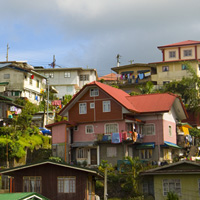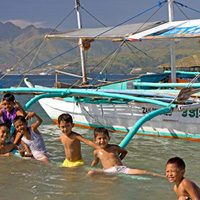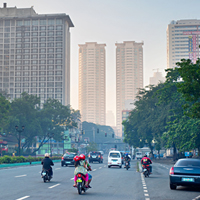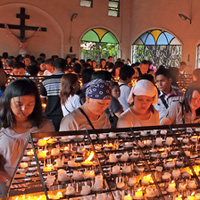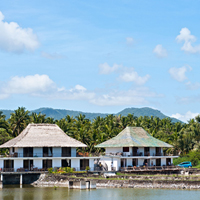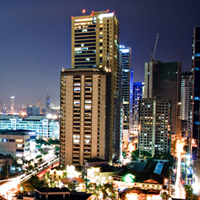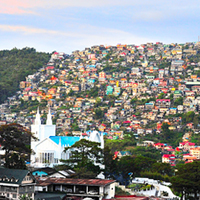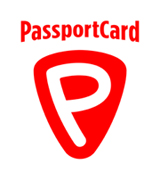The Philippines
Coastal BeachesThe Philippines is an archipelagic country located in Southeast Asia, composed of more than 7,600 islands. It is bounded by the South China Sea to the west, the Philippine Sea to the east, and the Celebes Sea to the south. This tropical nation is known for its rich biodiversity, stunning beaches, and vibrant culture. The Philippines has a diverse range of geographical features, from lush mountains and rainforests to volcanic landscapes and a vast array of marine life. Its history is a complex tapestry of indigenous, Malay, Spanish, American, and other foreign influences that have shaped its unique cultural identity. Filipino and English are the official languages, with Filipino based on Tagalog and English used in government and education. The country's economy is diverse, with agriculture, manufacturing, mining, and services sectors. It is also one of the emerging markets in the world. The Philippines is known for its warm and welcoming people, who are famous for their hospitality and the festive spirit of their numerous fiestas and celebrations. The capital city, Manila, is a bustling metropolis, while other regions offer a more laid-back lifestyle. The country's rich history is evident in its old churches, historic landmarks, and UNESCO World Heritage Sites. The Philippines is also known for its contribution to music, dance, and the arts, with a thriving entertainment industry. Despite facing challenges such as natural disasters, political issues, and social disparities, the Philippines continues to be a country of resilience and optimism.
 GeoBlue
GeoBlueGet Quote
GeoBlue is a trusted leader in international health insurance. Wherever your destination, GeoBlue can keep you and your family covered with the right health insurance. Get a GeoBlue Quote Today!
 GeoBlue
GeoBlueGeoBlue is a trusted leader in international health insurance. Wherever your destination, GeoBlue can keep you and your family covered with the right health insurance. Get a GeoBlue Quote Today!
Get Quote
Living in Philippines
Best Places to Live in Philippines
Visa & Residency
The process of obtaining a residency in the Philippines varies depending on the type of visa applied for. The Special Resident Retiree's Visa (SRRV) is a popular option for expatriates and retirees. To qualify for the SRRV, applicants must meet certain age and deposit requirements, which vary depending on the chosen SRRV option. For instance, the SRRV Smile requires a deposit of $20,000 in a Philippine bank for applicants 35 years old and above. The SRRV Classic, on the other hand, requires a deposit of $10,000 for those 50 years old and above with a pension, or $20,000 without a pension. This visa grants indefinite stay with multiple-entry privileges as long as the deposit is maintained. Another common visa for expatriates working in the Philippines is the 9(g) Pre-arranged Employment Visa, which is tied to an offer of employment from a Philippine-based company. The process involves securing an Alien Employment Permit, a No Objection Certificate, and other clearances before the visa application can be filed with the Bureau of Immigration. The 9(g) visa is typically valid for one to three years and is extendable as long as the employment persists. The application process for residency visas in the Philippines can be average in terms of difficulty. It involves gathering various documents, such as police clearances, medical certificates, and proof of financial capacity. The applicant must also attend a hearing and interview at the Bureau of Immigration. The processing time can vary, and it is advisable to seek assistance from a legal professional or a visa agent to navigate the complexities of the process. Overall, while there are several steps involved, the Philippines offers a range of visa options to suit different needs, and with proper guidance, obtaining a residency visa can be a manageable task.
Healthcare in Philippines
The healthcare system in the Philippines is a mixed public-private system. The public healthcare is managed by the Philippine health insurance Corporation (PhilHealth), which provides universal health coverage to Filipinos, although the quality and accessibility can vary greatly, especially between urban and rural areas. Private healthcare in the Philippines is generally of higher quality, with better facilities and shorter waiting times, but it is also more expensive. Expats and digital nomads can access public healthcare by becoming members of PhilHealth, either through formal employment or voluntary enrollment. However, many expats and digital nomads opt for private health insurance to cover services in private hospitals and clinics, which offer a higher standard of care. The cost of healthcare in the Philippines is relatively low compared to Western countries, but can still be a significant expense for serious conditions or long-term care.
Cost of Living
The cost of living in the Philippines is generally considered moderate, with expenses varying significantly between urban and rural areas. Basic goods and services are affordable, but imported items and luxury goods can be expensive.
Weather
The Philippines has a tropical maritime climate that is usually hot and humid. There are three seasons: Tag-init or Tag-araw (the hot dry season or summer from March to May), Tag-ulan (the rainy season from June to November), and Tag-lamig (the cool dry season from December to February). Typhoons can occur from June to September.
Educational System in Philippines
The educational system in the Philippines is influenced by its American colonial past and is structured in a similar fashion to the United States. Education is compulsory for children aged 5 to 18, which includes kindergarten to grade 12. The system is divided into four levels: kindergarten, elementary school (grades 1-6), junior high school (grades 7-10), and senior high school (grades 11-12). Children typically start kindergarten at the age of five. Elementary and high school education are provided free in public schools, and there are also numerous private schools across the country. The K-12 program, implemented in 2013, aims to provide sufficient time for mastery of concepts and skills, develop lifelong learners, and prepare graduates for tertiary education, middle-level skills development, employment, and entrepreneurship. The quality of education varies widely, with private schools and prestigious public schools generally offering higher quality education, while underfunded public schools in rural areas may struggle with resources. English is one of the mediums of instruction, which can be beneficial for children from English-speaking families.
Universities in Philippines
The university system in the Philippines is diverse, with a mix of public and private institutions. The Commission on Higher Education (CHED) oversees tertiary education and ensures quality standards. Bachelor's degrees typically take four years to complete, while certain programs like engineering or architecture may take five years, and medicine can take longer. The academic year usually starts in August or September and ends in May. There are several top-ranking universities, such as the University of the Philippines, Ateneo de Manila University, and De La Salle University, which offer a wide range of undergraduate and postgraduate programs. Foreign students are welcome, and English is the primary medium of instruction, making it easier for international students to adapt. Costs for foreign students can vary widely depending on the institution and program of study. Living expenses in the Philippines are relatively low compared to many Western countries, but international students should be aware of additional fees that may apply to them. Scholarships and financial aid opportunities are available but can be competitive.
Copyright 1997-2025 Burlingame Interactive, Inc.

